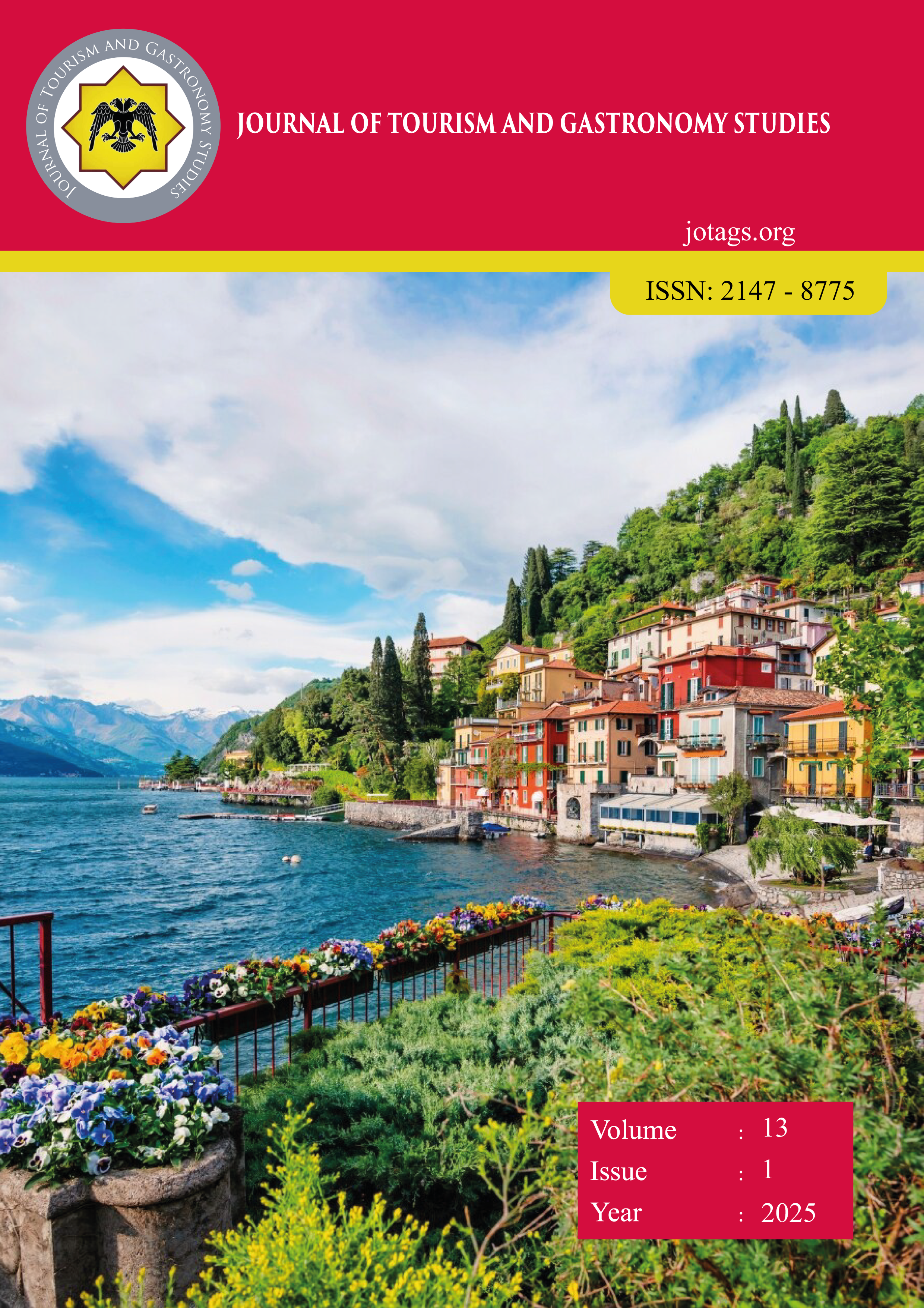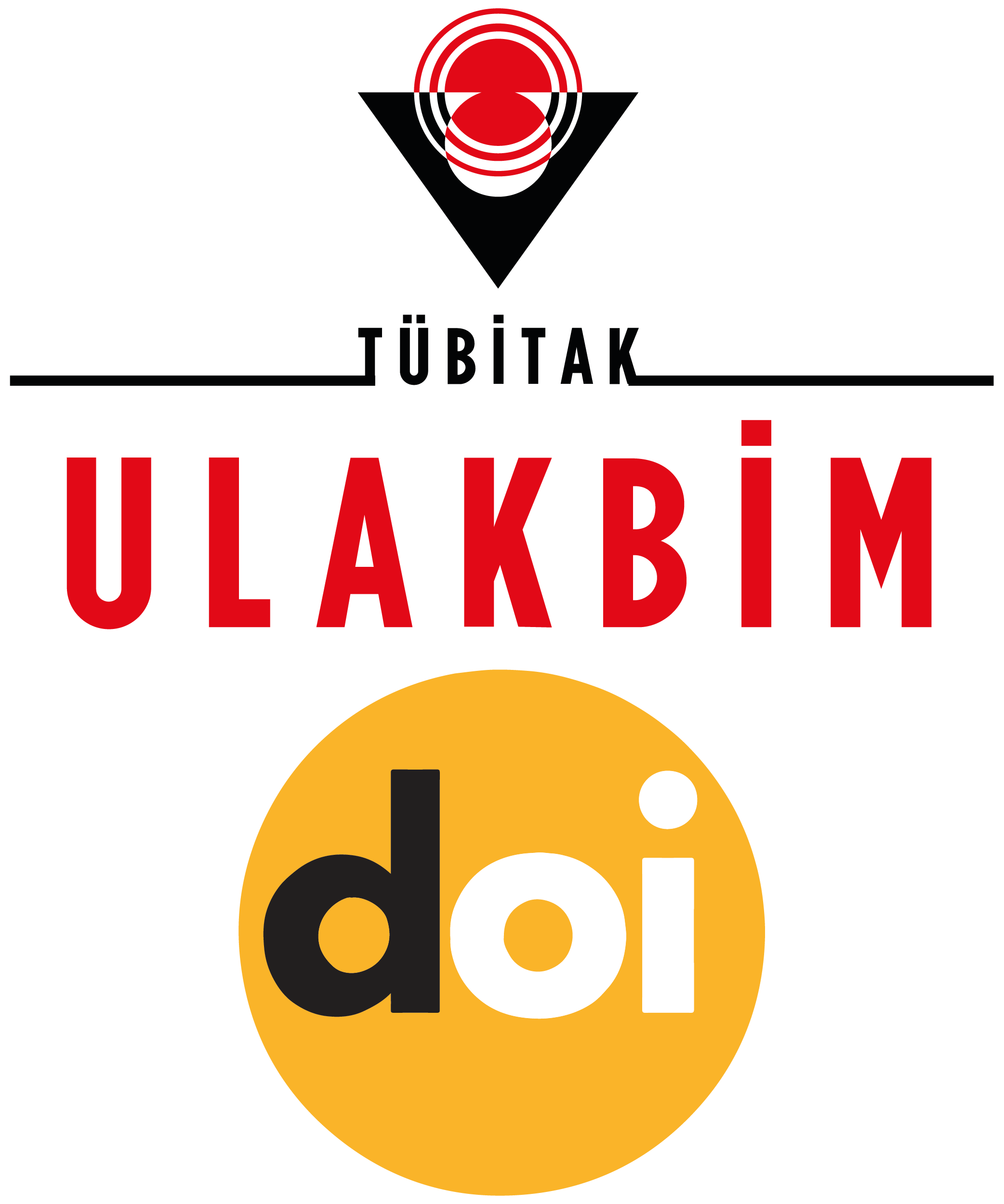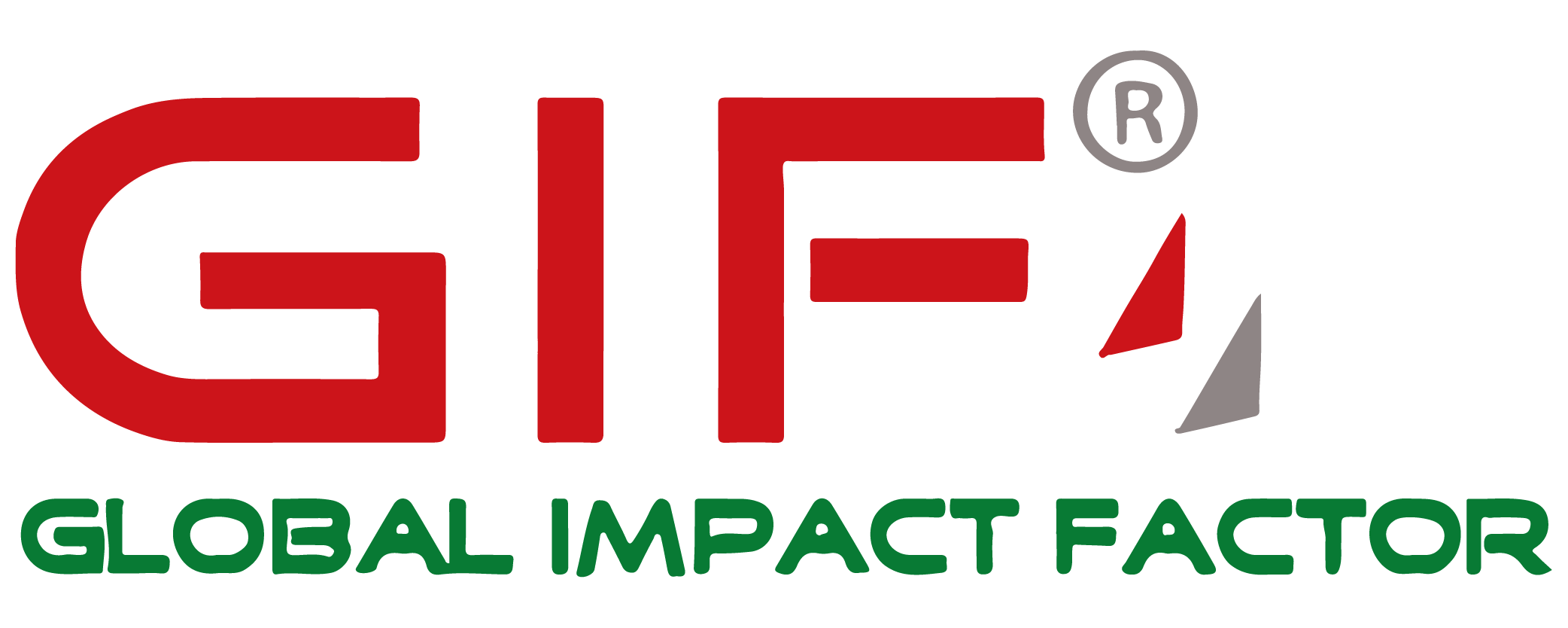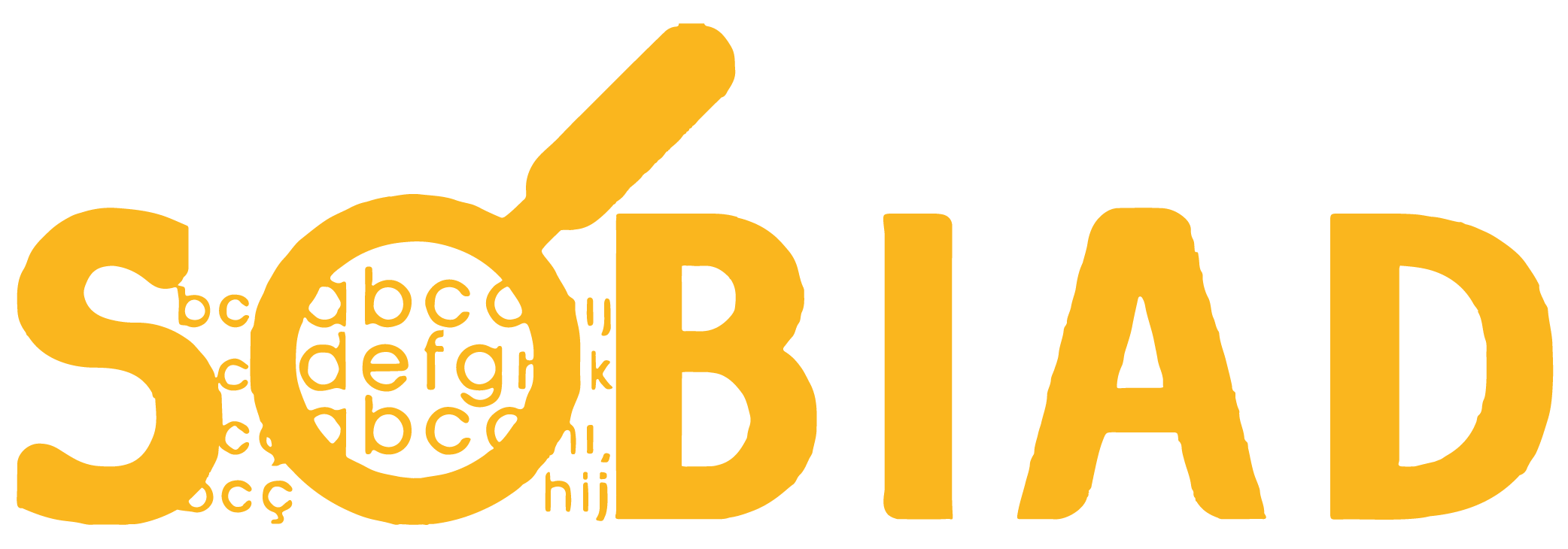Sıcak hava fritözü (Airfryer) ve Derin Yağda Kızartma İşleminin Akrilamid Oluşumu Yönünden Karşılaştırılması (Comparison of Airfryer and Deep Frying Process in Terms of Acrylamide Formation)
DOI:
https://doi.org/10.21325/jotags.2025.1549Keywords:
Acrylamide, Air fryer, Deep frying, French fries, MeatAbstract
Today, air fryers are preferred by a wide range of users. Compared to deep frying, air fryers are considered to be both more practical due to fast cooking and healthier due to the low amount of oil used. The main subject of this study is to investigate the formation of acrylamide in meat and potato cooked at the same temperature with air fryer and deep fat frying and to compare the sensory properties of these products. According to the results obtained of the study, more acrylamide formation was observed in products cooked in a air fryer compared to deep frying. Acrylamide content was 24.80 ± 1.18 mg/kg in meat cooked in air fryer and 6.20 ± 0.40 mg/kg in meat cooked in deep oil. In potatoes, 36.00 ± 1.24 mg/kg was found in air fryer and 11.00 ± 0.81 mg/kg in deep fat frying. In conclusion, air fryers, which have been widely used as an alternative to deep frying in recent years and provide less oil usage, need to be investigated in detail to better understand their role in acrylamide formation.
References
Altuğ Onoğur, T., & Elmacı, Y. (2011). Gıdalarda Duyusal Değerlendirme, (2. Baskı). İzmir, Sidas Yayıncılık.
Andrés, A., Arguelles, Á., Castelló, M. L., & Heredia, A. (2013). Mass transfer and volume changes in French fries during air frying. Food and Bioprocess Technology, 6, 1917-1924.
Arusoğlu, G. (2015). Akrilamid oluşumu ve insan sağlığına etkileri. Akademik Gıda, 13(1), 61-71.
Awogbemi, O., Kallon, D. V. V., & Owoputi, A. O. (2022). Biofuel generation from potato peel waste: current state and prospects. Recycling, 7(2), 23.
Basuny, A. M. M., & Oatıbı, H. H. A. (2016). Effect of a novel technology (air and vacuum frying) on sensory evaluation and acrylamide generation in fried potato chips. Banat's Journal of Biotechnology, 7(14).
Boskou, G., Salta, F.N., Chiou, A., Troullidou, E., Andrikopoulos, N.K. (2006). Content of trans, trans-2,4-decadienal in deep-fried and pan-fried potatoes. Eur. J. Lipid Sci. Technol., 108, 109-115.
Crawford, L. M., & Wang, S. C. (2019). Comparative study of four analytical methods for the routine determination of acrylamide in black ripe olives. Journal of Agricultural and Food Chemistry, 67(46), 12633-12641.
Cheng, P., & Wu, H. Y. (2006). Phase-change heat transfer in microsystems. In International Heat Transfer Conference 13. Begel House Inc.
Dong, L., Qiu, C. Y., Wang, R. C., Zhang, Y., Wang, J., Liu, J. M., ... & Wang, S. (2022). Effects of Air Frying on French Fries: The Indication Role of Physicochemical Properties on the Formation of Maillard Hazards, and the Changes of Starch Digestibility. Frontiers in Nutrition, 9, 889901.
EFSA (2015). Panel on Contaminants in the Food Chain (CONTAM), Scientific opinion on acrylamide in food. Efsa Journal, 13(6), 4104.
Erkekoglu, P., & Baydar, T. (2014). Acrylamide neurotoxicity. Nutritional Neuroscience, 17(2), 49-57.
EU Commission Regulation. (2017). Establishing mitigation measures and benchmark levels for the reduction of the presence of acrylamide in food, https://eur-lex.europa.eu/eli/reg/2017/2158/oj (Erişim Tarihi: 29.10.2023).
FDA. (2022). Acrylamide and Diet, Food Storage, and Food Preparation. Food & Beverages. https://www.fda.gov/food/process-contaminants-food/acrylamide-and-diet-food-storage-and-food-preparation (Erişim Tarihi: 30.05.2023).
Giovanelli, G., Torri, L., Sinelli, N. ve Buratti, S. (2017). Farklı pişirme sistemleri kullanılarak dondurulmuş patateslerden hazırlanan patates kızartmasının fiziko-kimyasal ve duyusal özelliklerinin karşılaştırmalı olarak incelenmesi. Avrupa Gıda Araştırması ve Teknolojisi, 243, 1619-1631.
Gouyo T, Mestres C, Maraval I, Fontez B, Hofleitner C, Bohuon P. (2020). Patates kızartmasının dokusuna ilişkin akustik-mekanik ölçümlerin değerlendirilmesi: derin yağda kızartma ve havada kızartmanın karşılaştırılması. Gıda Res Int, 131:108947.
Hamlet, C. G., Liang, L., Baxter, B., Apostilova, D., & Rozeela, A. (2019). Survey of acrylamide and furans in UK retail products: summaries and trends for samples purchased between January 2014 and November 2018. Food Standards Agency C, 41, 1-51.
Kaçar, S., & Şahintürk, V. (2018). Bir Çoklu Organ Toksini: Akrilamit. Osmangazi Tıp Dergisi, 40(1), 94-100.
Kaplan, O., Kaya, G., Ozcan, C, Ince, M., Yaman, M., (2009). Acrylamide concentrations in grilled foodstuffs of Turkish kitchen by high performance liquid chromatography-mass spectrometry. Microchemical Journal, 93: 173–179.
Lee, C. C., & Demirci, M. N. (2023). Different types of fryers for the food industry. In High-Temperature Processing of Food Products. 293-326. Woodhead Publishing.
Mesías, M., Holgado, F., Márquez-Ruiz, G., Morales, F.J. (2017). Impact of the characteristics of fresh potatoes available in-retail on exposure to acrylamide: Case study for French fries. Food Control, 73, 1407-1414.
Michalak, J., Gujska, E., Kuncewicz, A. (2013). RPHPLC-DAD studies on acrylamide in cereal-based baby foods. Journal of Food Composition and Analysis, 32(1), 68-73.
Mousavi Khaneghah, A., Fakhri, Y., Nematollahi, A., Seilani, F. ve Vasseghian, Y. (2022). Farklı gıda ürünlerinde akrilamid konsantrasyonu: küresel sistematik bir inceleme, meta-analiz ve meta-regresyon. Food Reviews International, 38 (6), 1286-1304.
Mucci, L.A., Sandin, S., Bälter, K., (2005). Acrylamide intake and breast cancer risk in Swedish women. JAMA, 293(11): 1326-1327.
Navruz-Varlı, S., & Mortaş, H. (2024). Acrylamide formation in air-fried versus deep and oven-fried potatoes. Frontiers in Nutrition, 10, 1297069.
Nizamlıoğlu, N. M., & Nas, S. (2019). Gıdalarda akrilamid oluşum mekanizmaları, gıdaların akrilamid içeriği ve sağlık üzerine etkileri. Akademik Gıda, 17(2), 232-242.
Palazoğlu, T. K., Savran, D. ve Gökmen, V. (2010). Pişirme yönteminin (kızartmaya kıyasla fırında pişirmenin) patates cipsindeki akrilamid düzeyine etkisi. Gıda Bilimi Dergisi, 75 (1), E25-E29.
Pekmezci, H., & Basaran, B. (2023). Dietary Heat-Treatment Contaminants Exposure and Cancer: A Case Study from Turkey. Foods, 12(12), 2320.
Sansano, M., Juan-Borrás, M., Escriche, I., Andrés, A., & Heredia, A. (2015). Effect of pretreatments and air-frying, a novel technology, on acrylamide generation in fried potatoes. Journal of Food Science, 80(5), T1120–T1128.
Teruel, M. D. R., Gordon, M., Linares, M. B., Garrido, M. D., Ahromrit, A., & Niranjan, K. (2015). A comparative study of the characteristics of french fries produced by deep fat frying and air frying. Journal of Food Science, 80(2), E349-E358.
Verma, V., Singh, V., Chauhan, O. P., & Yadav, N. (2023). Comparative evaluation of conventional and advanced frying methods on hydroxymethylfurfural and acrylamide formation in French fries. Innovative Food Science & Emerging Technologies, 83, 103233.
Wang, Y., Wu, X., McClements, D. J., Chen, L., Miao, M., & Jin, Z. (2021). Effect of new frying technology on starchy food quality. Foods, 10(8), 1852.
Yaylayan, V., Wnorowski, A., Locas, C. (2003). Why asparagine needs carbohydrates to generate acrylamide. Journal of Agricultural and Food Chemistry, 51(6), 1753-1757.
Zaghi, A. N., Barbalho, S. M., Guiguer, E. L., & Otoboni, A. M. (2019). Frying process: From conventional to air frying technology. Food Reviews International, 35(8), 763-777.
Zhang, Y., Dong, Y. and Ren, Y., (2006). Rapid determination of acrylamide contaminant in conventional fried foods by gas chromatography with electron capture dedector. Journal of Chromatography A, 1116, 209-216.
Zyzak, D.V., Sanders, R.A., Stojanovıc, M., Tallmadge, D.H., Eberhart, B.L., Ewald, D.K., Gruber, D.C., Morsch, T.R., Strothers, M.A., Rızzı, G.P., Villagran, M.D. (2003). Acrylamide formation mechanism in heated foods. Journal of Agricultural and Food Chemistry, 51(16), 4782-4787
Downloads
Published
How to Cite
Issue
Section
License
Copyright (c) 2025 Journal of Tourism & Gastronomy Studies

This work is licensed under a Creative Commons Attribution-NonCommercial 4.0 International License.








